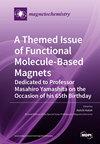有机金属中密度波背景下超导岛的大小
IF 2.5
4区 化学
Q2 CHEMISTRY, INORGANIC & NUCLEAR
引用次数: 2
摘要
大多数高温超导体在空间上是不均匀的。通常,这种异质性源于各种类型的电子订购的相互作用。它影响着各种超导性能,如转变温度、上临界磁场、临界电流等。本文分析了具有不完全嵌套的准一维金属在超导态和电荷或自旋密度波态之间的一阶转变过程中的空间相偏析参数,这是典型的有机超导体。外部压力或其他驱动参数增加了电子色散中的传递积分,仅对SC有轻微影响,但破坏了费米表面嵌套并抑制了密度波(DW)。在临界压力Pc下,发生从DW到SC的转变。我们用两种方法估计了有机金属相变过程中超导岛的特征尺寸。利用Ginzburg-Landau展开,我们解析地得到了SC域大小的下界。为了估计(TMTSF)2PF6样品中超导岛可能大小的更具体区间,我们通过SC域对渗透概率进行了数值计算,并将结果与实验电阻率数据进行了比较。这有助于对各种有机超导体中SC的空间非均质性进行一致的微观描述。本文章由计算机程序翻译,如有差异,请以英文原文为准。
On the Size of Superconducting Islands on the Density-Wave Background in Organic Metals
Most high-Tc superconductors are spatially inhomogeneous. Usually, this heterogeneity originates from the interplay of various types of electronic ordering. It affects various superconducting properties, such as the transition temperature, the magnetic upper critical field, the critical current, etc. In this paper, we analyze the parameters of spatial phase segregation during the first-order transition between superconductivity (SC) and a charge- or spin-density wave state in quasi-one-dimensional metals with imperfect nesting, typical of organic superconductors. An external pressure or another driving parameter increases the transfer integrals in electron dispersion, which only slightly affects SC but violates the Fermi surface nesting and suppresses the density wave (DW). At a critical pressure Pc, the transition from a DW to SC occurs. We estimate the characteristic size of superconducting islands during this phase transition in organic metals in two ways. Using the Ginzburg–Landau expansion, we analytically obtain a lower bound for the size of SC domains. To estimate a more specific interval of the possible size of the superconducting islands in (TMTSF)2PF6 samples, we perform numerical calculations of the percolation probability via SC domains and compare the results with experimental resistivity data. This helps to develop a consistent microscopic description of SC spatial heterogeneity in various organic superconductors.
求助全文
通过发布文献求助,成功后即可免费获取论文全文。
去求助
来源期刊

Magnetochemistry
Chemistry-Chemistry (miscellaneous)
CiteScore
3.90
自引率
11.10%
发文量
145
审稿时长
11 weeks
期刊介绍:
Magnetochemistry (ISSN 2312-7481) is a unique international, scientific open access journal on molecular magnetism, the relationship between chemical structure and magnetism and magnetic materials. Magnetochemistry publishes research articles, short communications and reviews. Our aim is to encourage scientists to publish their experimental and theoretical results in as much detail as possible. Therefore, there is no restriction on the length of the papers. The full experimental details must be provided so that the results can be reproduced.
 求助内容:
求助内容: 应助结果提醒方式:
应助结果提醒方式:


